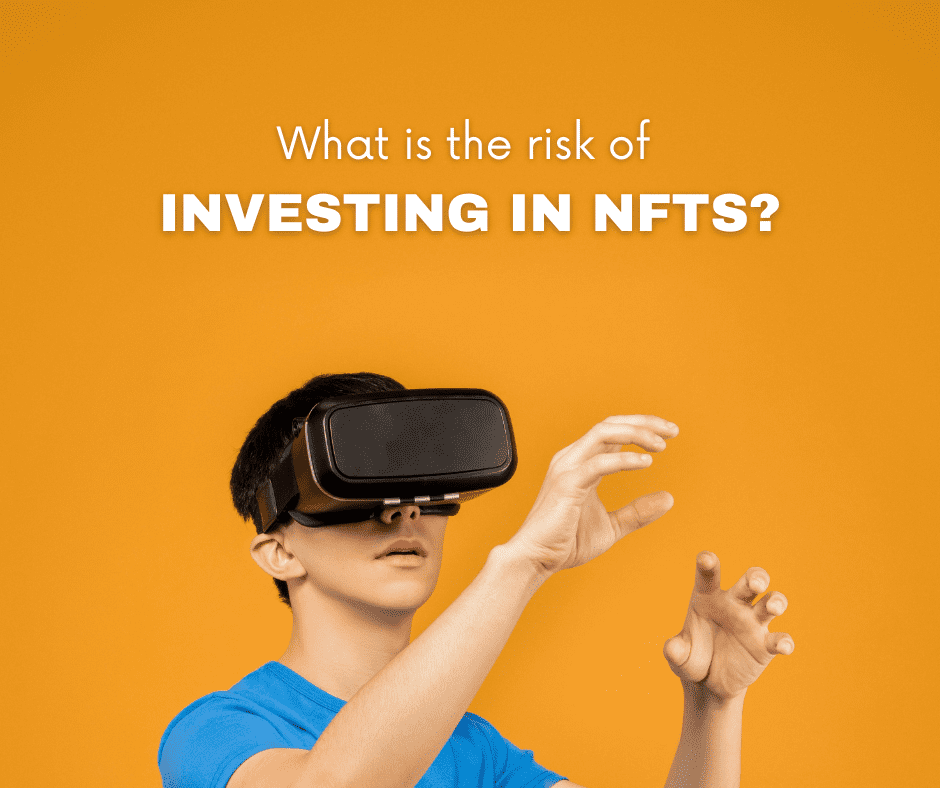Have you heard of NFTs? They’re the latest craze in the world of digital art and collectibles, with some selling for millions of dollars. But as with any investment opportunity, there’s always a risk involved. So what exactly is the risk of investing in NFTs? In this blog post, we’ll explore the potential pitfalls and rewards of this emerging market. Whether you’re an experienced investor or just curious about this new trend, read on to discover if NFTs are worth your time and money.
What are NFTs?
Non-fungible tokens represent a unique asset, unlike Bitcoin or Ethereum, which are fungible (meaning each unit is interchangeable).
This uniqueness makes NFTs desirable to collectors and investors alike. However, because NFTs are still a relatively new and untested technology, there is a lot of risk involved in investing in them.
For one, the value of NFTs can be highly volatile. This is due in part to the fact that there is no central exchange for NFTs, so prices can vary wildly from one platform to another. What’s more, the lack of regulation around NFTs means that there is no guarantee that you will be able to sell your NFTs later down the line.
There is also the risk that the platforms on which you purchase NFTs may not be around for long. Many of these platforms are still in their infancy and could disappear overnight if they run into financial trouble or fail to attract enough users.
Lastly, there is always the possibility of fraud when dealing with any kind of investment, and NFTs are no exception. Because they exist purely online and often involve complex smart contracts, it can be difficult to tell if an NFT is genuine or not. This problem was highlighted recently when an artist sold an “NFT” for $140.


How do NFTs work?
NFTs are digital assets that are stored on a blockchain, similar to how cryptocurrencies are stored. When you purchase an NFT, you are purchasing a unique piece of digital art or content that can be stored in your digital wallet and traded on an NFT marketplace.
NFTs have become popular in recent years as a way to invest in digital art and content. However, there is some risk involved in investing in NFTs. First, the value of NFTs can be volatile. The price of an NFT can go up or down very quickly, and it is hard to predict what will happen to the value of an NFT over time. Second, there is a risk that the platform on which you purchase your NFT could be hacked or shut down, which would result in the loss of your investment.
Before investing in any asset, it is important to research the risks involved and make sure you are comfortable with those risks. If you are thinking about investing in NFTs, make sure you understand the risks before doing so.
The risks of investing in NFTs
NFTs have been gaining in popularity lately, as more and more people are looking to invest in them. But what is the risk of investing in NFTs?
There are a few risks to consider when investing in NFTs. First, their value is highly volatile, so you could end up losing money if you don’t sell at the right time. Second, there’s no guarantee that an NFT will keep its value over time; it could become worthless tomorrow. Finally, because NFTs are still relatively new and unproven, there’s a chance that the whole market could collapse, and you could lose everything you’ve invested.
Of course, with any investment, there’s always a risk involved. But if you’re considering investing in NFTs, make sure you understand the risks before you do.


Are there any benefits to investing in NFTs?
Yes, there are benefits to investing in NFTs. One key benefit is that NFTs can be resold or exchanged for other assets. For example, an investor could buy an NFT and then later sell it for a profit if the value of the NFT increases. Additionally, NFTs can be used to purchase goods and services. For example, an investor could use an NFT to buy a virtual item in a game or exchange it for a new cryptocurrency. Finally, holding an NFT can indicate support for the project or artist behind the NFT, which could lead to more value being created in the future.
Conclusion
As with any investment, there is an associated risk when investing in NFTs. However, this risk can be minimised by researching the underlying asset before purchase and by understanding the market conditions of the specific NFT that you are considering. Additionally, investors should employ diversification strategies to spread out their portfolios and reduce overall losses if a certain sector or individual asset experiences volatility or decline. With these tips in mind, investing in NFTs might just turn out to be a worthwhile endeavour after all!
